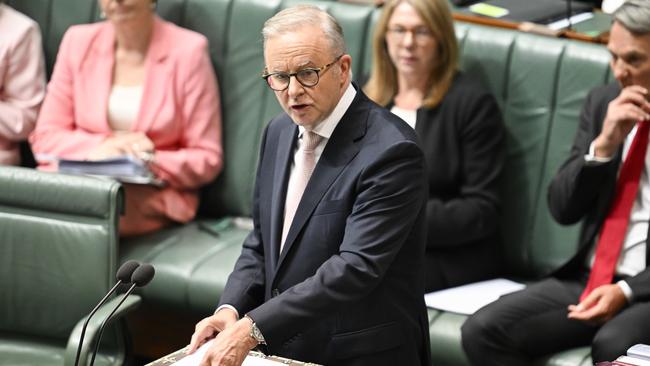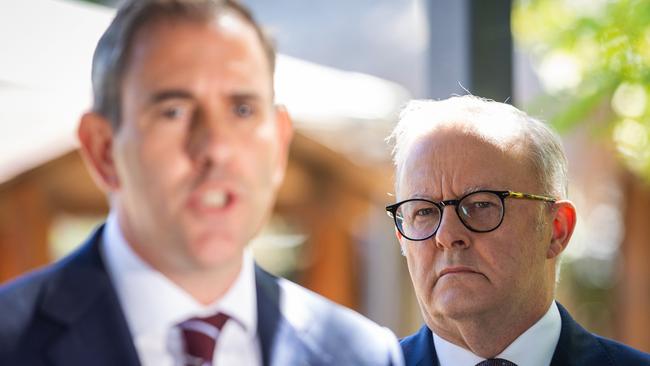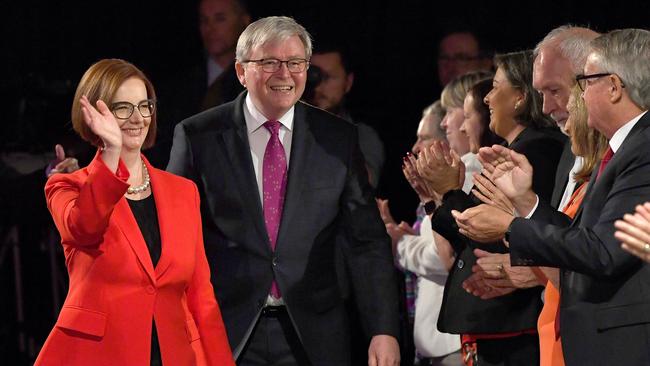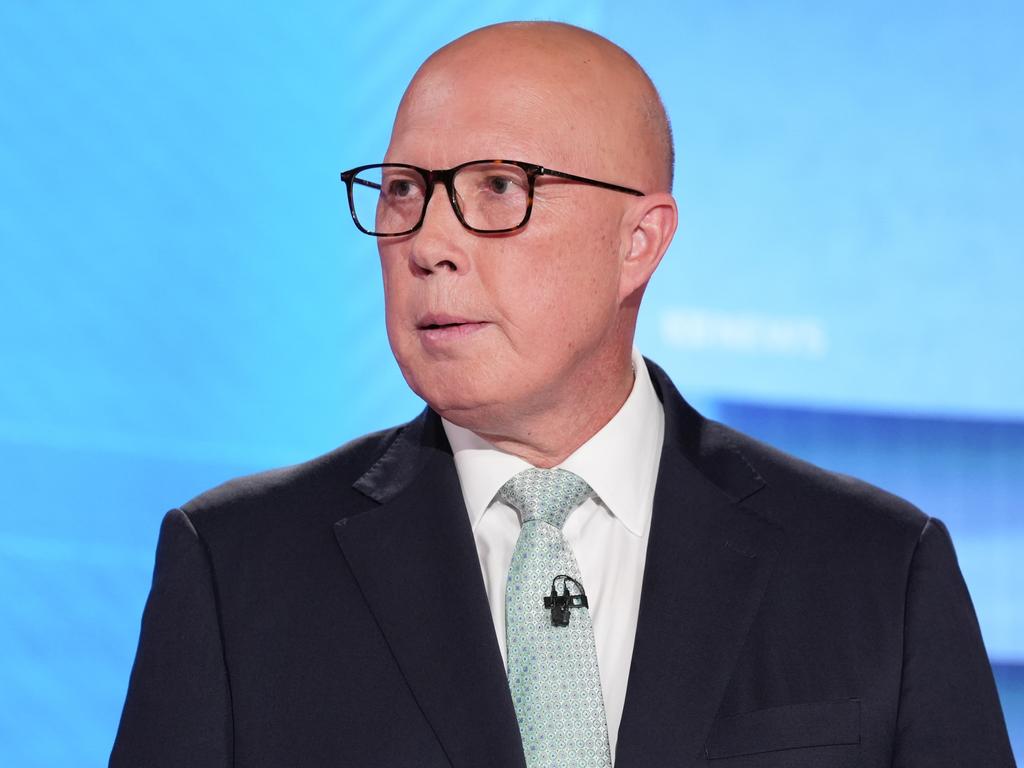
Anthony Albanese is setting out not only to win re-election but also to write himself into the history books as the first prime minister in two decades to win re-election, break the second-term curse that has bedevilled every post-war government and become the third Labor leader to win back-to-back elections.
This election is vested with historical significance beyond most others. After the backstabbing, infighting and revolving-door prime ministership that destroyed the Rudd-Gillard-Rudd and Abbott-Turnbull-Morrison governments, it is no surprise that one of Albanese’s core messages is continuity and certainty.
The last prime minister to win back-to-back elections was John Howard.
Hardly anybody under 30 would remember that. It is an indictment of our political culture that we have had so many short-term prime ministers. Albanese will earn a place in the annals of Labor history if he becomes the only leader alongside Gough Whitlam and Bob Hawke to win at least two elections in a row.

But Labor must overcome the second-term curse that has spared no government since Robert Menzies sought re-election in 1951.
Every government has lost seats when first seeking re-election. This also goes for Whitlam, Malcolm Fraser, Hawke and the previous Labor and Coalition governments led by Julia Gillard and Malcolm Turnbull, respectively. At this election Labor has a notional 78 seats; lose three and it loses its majority.
Yet the historical omens are on Labor’s side.
No first-term government has been defeated since Jim Scullin’s Labor administration lost the 1931 election and resigned in 1932. Moreover, as I have often noted, no first-term opposition leader after their party’s defeat has won an election since 1914 (Andrew Fisher). So that history is stacked against Peter Dutton.
Every prime minister studies the table of longevity to see where they rank. An election victory next week would propel Albanese to eighth out of 31 prime ministers if he serves two years; that is, longer in office than any prime minister after Howard and making him the second longest-serving Labor prime minister. In fact, he beats every prime minister for longevity after Howard in less than a year.
This raise the question: if re-elected, when will Albanese quit? Albanese has said he would serve a full term if returned to power and contest the next election. What else is he supposed to say?
Yet the tantalising prospect for Albanese if he wants another record to break is exiting the prime ministership at a time of his own choosing. No one has done that since Menzies.

Harold Holt was lost at sea, John McEwen was only a caretaker and Whitlam was dismissed in a vice-regal ambush.
John Gorton, Hawke, Kevin Rudd, Gillard, Tony Abbott and Turnbull were felled by their partyrooms, leaving after the axe fell or before it became inevitable. Billy McMahon, Fraser, Paul Keating, Howard and Scott Morrison lost elections. Rudd lost an election, too.
Why suffer the trauma of defeat? The thing that makes Albanese unique is he never really aspired to be prime minister, so every day is a blessing. He may not be Araldited to the office. He also is about to get married and has purchased a clifftop home on the NSW central coast. A new life awaits. And if he can bag another accolade, why not go before being pushed or defeated?
If Labor sticks with its 2013 rules for leadership elections, party members and MPs vote in equal proportion. The caucus, always master of its own destiny, could wrest back control with a simple majority vote. This would make it a caucus ballot.
Jim Chalmers, as the government’s best performer, will run and be hard to beat. Richard Marles and Tony Burke, also effective ministers, are likely to nominate. So is Tanya Plibersek. If members get a say, this will give Plibersek an edge. The election, however, is not yet won for Labor.
There is anxiety about cost-of-living pressures and some voters will blame the government for their lower standard of living compared with three years ago.

The hip-pocket nerve is acute in the suburbs and regions. Voters have had to cope with increased mortgage payments and rents alongside sharp rises in the prices of goods and services.
While the Coalition’s campaign has been plagued with policy confusion and backflips, poor political strategy and co-ordination, lack of message discipline and a weak frontbench, demonstrating they are not ready for government, the risk for Labor is this leads to complacency in the final fortnight. Labor strategists are determined to avoid this.
A minority parliament where no major party has a majority of seats cannot be ruled out.
It is likely because about one-third of voters will opt for minor parties and independents. It would be the first minority parliament since 2010-13, which was productive but chaotic, and only the second since 1940-43, also productive but chaotic. That is until John Curtin became prime minister in 1941.
Several prime ministers have changed their leadership style, jettisoned policy baggage, and altered their personal appearance. Think Menzies, Hawke and Howard. The Albanese transformation also has been significant.

His rise to the nation’s top job is extraordinary. He was unelectable before dumping radical policy views, setting aside the grudges and chip on his shoulder, and became more collegial with colleagues. He always has had a hard edge but soft heart.
Albanese has never scaled the heights of popularity. Yet he has led a united team, provided stability and restored proper cabinet practices. He is hardworking, disciplined, focused and administratively efficient. These are important.
Labor has a record of achievement (health, education, wages) alongside failures (energy prices) and missed opportunities (taxation reform, fiscal consolidation).
If Albanese really wants to cement his place in history, he needs to focus more on combining policies with values and developing a narrative that animates the purpose of his government within the Australian story. And, if he wins a second term, he needs to be much bolder on policy and take more risks. That is how you really make your mark.




